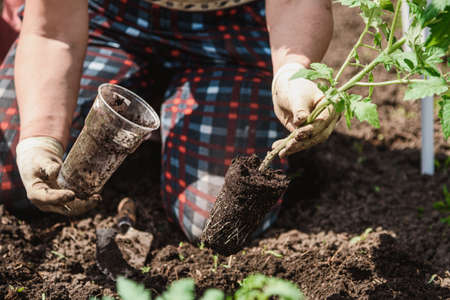Introduction to Container Gardening in the UK
Container gardening has become a thriving trend across Britain, especially among urban dwellers and those with limited outdoor space. As more people opt for flats or homes with modest gardens, the flexibility offered by container gardening is proving invaluable. This approach allows individuals to cultivate a wide variety of vegetables on balconies, patios, and even small courtyards, making the most of every available inch. Not only does it cater to those who lack traditional garden beds, but it also provides an opportunity to bring lush greenery and homegrown produce into compact British spaces. The adaptability of containers means that anyone—regardless of experience or property size—can enjoy the satisfaction of growing their own veg right at home. Whether youre looking to enhance your cooking with fresh ingredients or simply want to add some green to your surroundings, container gardening is an accessible and rewarding option perfectly suited to contemporary British lifestyles.
Key Considerations for British Container Veg
Growing vegetables in containers is an excellent solution for compact British spaces, but success relies on understanding the unique conditions of the UK’s urban and suburban environments. Below are essential factors every gardener should consider:
Climate Adaptability
The British climate is famously variable, with cool summers and frequent rainfall. When choosing container-friendly vegetables, opt for varieties that thrive in these conditions. Hardy crops such as lettuce, spinach, and spring onions are well-suited to unpredictable weather patterns. For warmth-loving vegetables like tomatoes or peppers, consider sheltered spots or portable containers that can be moved indoors during cold snaps.
Soil Types and Composition
Urban and suburban soils often lack nutrients or have drainage issues. Using high-quality compost is crucial for container gardening, as it provides a nutrient-rich base and retains moisture without becoming waterlogged. Regularly enrich your soil with organic matter to ensure healthy root development and sustained growth.
Recommended Compost Mixes for Common Veg
| Vegetable | Ideal Compost Mix |
|---|---|
| Lettuce & Leafy Greens | Multi-purpose compost with added perlite for drainage |
| Tomatoes & Peppers | Grow bag compost blended with loam-based John Innes No. 2 |
| Root Vegetables (Carrots, Beetroot) | Sandy compost with minimal stones for even root formation |
Sunlight Requirements
Access to sunlight can be limited in built-up areas. Most vegetables require at least 6 hours of direct sunlight daily. Observe your outdoor space throughout the day to identify sunniest spots—balconies, patios, or south-facing windowsills are ideal locations for containers. For shadier gardens, choose crops like salad leaves or chard that tolerate lower light levels.
Common Urban Challenges
British urban gardening comes with its own set of obstacles:
- Pests: Slugs, snails, and aphids are common; use copper tape or organic deterrents around pots.
- Wind Exposure: Tall buildings can create wind tunnels; shield containers with trellises or group them for protection.
- Limited Space: Utilise vertical planters or stackable pots to maximise growing area.
- Water Management: Containers dry out faster than ground soil; regular watering is essential, especially during dry spells.
Summary Table: Key Factors at a Glance
| Factor | Consideration for British Gardens |
|---|---|
| Climate | Select hardy or adaptable veg varieties; protect from late frosts. |
| Soil Quality | Use enriched compost; ensure good drainage in containers. |
| Sunlight | Aim for 6+ hours/day; prioritise sunniest available spots. |
| Pests & Wind | Apply physical barriers; group containers for mutual shelter. |
| Irrigation | Monitor moisture closely; water consistently in dry periods. |
By carefully considering these key factors, you’ll set a strong foundation for thriving container-grown vegetables tailored to British conditions.
![]()
3. Top Vegetable Choices for Small British Spaces
When it comes to container gardening in the UK, selecting the right vegetables is crucial for success, especially when space is at a premium. Here’s a carefully curated list of vegetables that thrive in containers and are well-adapted to British weather and urban environments.
Leafy Greens
Lettuce
Lettuce varieties, such as Little Gem or Salad Bowl, are ideal for containers thanks to their shallow root systems and quick growth cycle. They tolerate cooler temperatures and can be harvested continuously, making them perfect for the unpredictable British climate.
Spinach
Spinach is another compact choice, growing well in partial shade—common in many UK gardens. Its resilience to fluctuating temperatures and ability to regrow after cutting make it a staple for small spaces.
Dwarf Root Vegetables
Radishes
Fast-maturing and compact, radishes are excellent for containers. They require little depth and can be sown successively for a steady supply. Their rapid turnaround suits the short British summers.
Carrots (Short Varieties)
Look for stubby or round carrot types like ‘Paris Market’ or ‘Chantenay’. These thrive in pots and don’t need deep soil, making them practical for patios or balconies with limited space.
Climbing and Bush Varieties
Dwarf French Beans
Dwarf bush beans take up minimal room but yield impressively. They grow quickly during the UK summer months and require only modest staking, fitting well on terraces or small decks.
Peas (Mangetout/Sugar Snap)
Mangetout and sugar snap peas flourish in cooler British conditions and can be trained vertically up trellises or supports, maximising vertical space without crowding out other plants.
Compact Fruiting Crops
Cherry Tomatoes
Bush or tumbling cherry tomatoes like ‘Tumbling Tom’ excel in hanging baskets or window boxes. Their small footprint and high productivity make them a firm favourite among UK urban gardeners.
Courgettes (Patio Varieties)
Modern patio courgette cultivars such as ‘Midnight’ have been bred specifically for container growing. They produce abundant fruits in restricted areas and cope well with the cooler start to the British growing season.
Why These Choices Work for UK Conditions
The above vegetables have been selected not just for their suitability to container life but also their resilience to the UKs variable weather patterns, shorter growing seasons, and frequent rainfall. By focusing on compact varieties with quick maturity rates or continuous harvesting potential, British gardeners can make the most of even the smallest outdoor spaces.
4. Container Selection and Setup Tips
Choosing the right containers and setting them up properly is crucial for successful container vegetable gardening in compact British spaces. The following recommendations are tailored for UK conditions, taking into account typical garden sizes, climate, and locally available materials.
Recommended Container Types and Sizes
| Vegetable Type | Container Type | Minimum Size |
|---|---|---|
| Lettuce & Salad Leaves | Shallow troughs or window boxes | Width: 30cm; Depth: 15cm |
| Tomatoes & Peppers | Pots with support (e.g., grow bags or deep planters) | Diameter: 30cm; Depth: 30cm+ |
| Carrots & Beetroot | Tall containers or barrels | Depth: 25-30cm minimum |
| Herbs (Basil, Parsley, Mint) | Small pots or grouped herb planters | Diameter: 15-20cm; Depth: 15cm |
| Runner Beans & Peas | Tall pots with trellis or obelisks | Diameter: 25cm; Depth: 30cm+ |
Drainage Requirements for British Conditions
Boggy British weather can lead to waterlogged soil if drainage is inadequate. Always select containers with several drainage holes at the base. Line the bottom with a layer of broken terracotta pots (crocks) or coarse gravel to encourage excess water to escape and prevent root rot.
Top Drainage Tips:
- Avoid saucers outdoors during wet spells to prevent standing water.
- If using wooden planters, ensure they are raised off the ground with pot feet to allow air circulation underneath.
- Check regularly that drainage holes remain unclogged by compost or roots.
Using British-Sourced Compost and Materials
Select peat-free composts produced in the UK to support sustainability and local industry. Multi-purpose compost works well for most veg, but root crops benefit from finer seed compost. Consider mixing in John Innes No. 2 for added nutrients, especially for fruiting vegetables like tomatoes and peppers. Where possible, use reclaimed British materials—such as repurposed wooden crates or galvanised steel troughs—to add both character and eco-friendliness to your space.
Seasonal Planting and Care for British Weather
One of the key aspects of successful container vegetable gardening in the UK is adapting your planting schedule and care routines to suit the country’s famously unpredictable weather. Understanding when and how to plant, water, and protect your crops is essential for maximising yields in compact spaces.
Best Planting Times for Popular Veg
Timing is crucial in the UK climate. For most container-friendly vegetables such as lettuce, radishes, and spinach, early spring sowings (March to April) are ideal, taking advantage of milder temperatures. Tomatoes, peppers, and courgettes should be started indoors from late February or March, then moved outside after the last frost – typically in late May. Autumn sowings of hardy crops like kale or winter salads can extend your growing season well into colder months.
Watering Practices for Containers
Container plants require more frequent watering than those grown in open ground due to their limited soil volume. However, overwatering can be just as detrimental as underwatering. In the UK, rainfall can be erratic; check soil moisture by inserting your finger about an inch deep—water only if it feels dry. During warm spells or dry periods, daily watering may be necessary, but always ensure pots have adequate drainage to prevent root rot.
Frost Protection Strategies
The threat of late spring or early autumn frosts is a reality across much of Britain. Protect tender veg by moving containers close to house walls or into sheltered areas on cold nights. For larger planters that cannot be moved easily, horticultural fleece or cloches offer effective insulation against sudden temperature drops. Remember that urban microclimates—such as patios and balconies—often stay slightly warmer than open gardens, providing some natural protection.
Adapting Care to Regional Variations
The UK’s regional climates differ significantly: southern England tends to enjoy longer growing seasons, while northern and Scottish regions may experience cooler conditions and later frosts. Adjust your planting calendar accordingly and monitor local forecasts throughout the season. With flexible planning and attentive care, you can enjoy a productive container garden regardless of your location within Britain.
6. Maximising Yields in Compact Areas
When growing vegetables in small British spaces, making the most of every inch is crucial. Several tailored strategies can help you boost productivity in containers while maintaining a tidy and manageable garden.
Vertical Gardening: Growing Upwards
Utilising vertical space is a game-changer for compact gardens. Trellises, obelisks, and wall-mounted planters allow you to grow climbing crops such as runner beans, peas, and cucumbers upwards rather than outwards. This not only conserves valuable ground space but also enhances air circulation and light exposure, reducing the risk of disease—particularly important in the often damp British climate. Consider training tomatoes or even strawberries vertically for increased yields and visual interest.
Successional Sowing: Continuous Harvests
To ensure a steady supply of fresh produce, practice successional sowing by planting small batches of seeds at intervals throughout the season. For example, sow lettuce or radishes every two weeks to enjoy ongoing harvests rather than one glut. This approach is particularly effective in the UK’s variable weather, as it allows you to take advantage of milder periods and avoid losses from unexpected cold snaps or heatwaves.
Companion Planting: Smart Plant Partnerships
Careful pairing of plants can maximise both productivity and plant health within limited container space. Marigolds deter aphids from tomatoes and beans, while nasturtiums act as sacrificial plants to lure pests away from brassicas. Herbs like basil not only thrive alongside tomatoes but also enhance their flavour and growth. Adapting traditional companion planting principles to pots ensures your compact British garden remains vibrant and resilient throughout the season.
Practical Tips for Small British Gardens
Choose dwarf or compact varieties bred for container growth, rotate crops annually to maintain soil health, and use high-quality compost for sustained fertility. With careful planning and these space-saving techniques, even the smallest patio or balcony can yield a bountiful harvest perfectly suited to British tastes and growing conditions.


